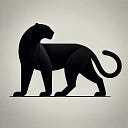Member-only story
The Durability of the Greek Gods
Historians often refer to the Renaissance as a ‘rebirth’ — or ‘rediscovery’ — of classical art and philosophy. But this is a misnomer. As Jean Seznec writes in The Survival of the Pagan Gods, ‘it is now recognized that pagan antiquity, far from experiencing a “rebirth” in fifteenth-century Italy, had remained alive within the culture and art of the Middle Ages. Even the gods were not restored to life, for they had never disappeared from the memory or imagination of man’.
Malcolm Bull, in his book The Mirror of the Gods, also sees ‘continuities in [European] literature, language and custom’, but argues that ‘the religion that bound these things together had been obliterated by Christianity’. Therefore, the ‘challenge of the Renaissance was not the recovery of the past, but finding the spark that had given it life’.
More often than not, this spark is missing in contemporary representations of the Greek gods. A prime example is the caricature of Zeus in Marvel’s Thor: Love and Thunder:
The classical scholar Jane Harrison, writing in the early twentieth-century, argued that…
